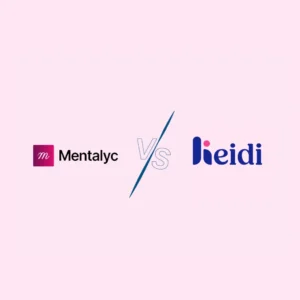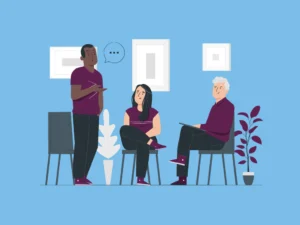In mental healthcare, the demand for therapy and counseling services often surpasses the availability of practitioners, leading to the creation of client waitlists. Managing a waitlist can present challenges in ensuring equitable access and maintaining client engagement. This article offers practical strategies for therapists to efficiently build, manage, and utilize a client waitlist, considering both clients’ welfare and the practice’s sustainability.
How Does a Therapist Determine if They Need a Waitlist?
If a therapist consistently receives more client inquiries than they can accommodate within a reasonable timeframe, it’s time to consider creating a waitlist. This situation can be attributed to several factors, each underscoring the importance of managing client flow through an effective waitlist system.
Limited Appointment Availability
Given the intensive nature of therapy sessions and the need for adequate preparation and follow-up, therapists can only see a finite number of clients in a day. This constraint makes it impossible to accommodate all interested clients immediately, necessitating a waitlist to manage appointments systematically and fairly.
Growing Professional Reputation
A therapist’s reputation, whether through successful client outcomes, publications, or community engagement, can increase demand for their services. While this is a positive indicator of their professional impact, it can lead to scheduling challenges. A waitlist provides a structured method to accommodate new clients as openings arise, ensuring that services are accessible to those in need.
Specialization in High-Demand Areas
Therapists often specialize in specific areas of mental health, such as anxiety disorders, trauma, or child psychology. Clinicians with expertise in high-demand services may face more inquiries than they can manage. A waitlist allows these therapists to prioritize clients based on urgency, specialization fit, and other criteria, ensuring they can provide high-quality care to those most in need.
Seasonal Variations in Mental Health Needs
Like other fields, mental health practices have seasonal fluctuations in demand. For example, the holiday season can be a time of heightened emotional stress for many, leading to an increase in the need for psychological services. A waitlist helps manage seasonal peaks, ensuring clients receive timely support.
Strategic Practice Management and Growth
A waitlist is about managing current demand and planning for future growth. Analyzing waitlist data can offer insights into patterns of demand, the effectiveness of different marketing strategies, and the potential need for expanding practice offerings or hours. This strategic use of waitlist data can aid therapists in making informed decisions about hiring additional staff, specializing further, or adjusting their service offerings.
Implementing a waitlist must be done with sensitivity and care. Therapists must communicate clearly with clients about expected wait times and offer resources or referrals if immediate support is needed. Additionally, managing a waitlist ethically involves ensuring that it does not become a barrier to care, especially for those in critical need of mental health support.
A waitlist is an essential tool for therapists to manage demand effectively, maintain the quality of their services, and plan strategically for the future of their practice. It ensures that clients are seen in a timely and organized manner while also providing valuable insights for practice management and growth.
How to Set Up a Waitlist
Establishing a waitlist system can help therapists manage demand and client expectations effectively. Here are the issues therapists should consider:
Clear Communication
- Website and Social Media: A therapist’s digital presence is often the first point of contact for potential clients. Ensure websites and social media profiles contain an easy-to-find section for waitlist information, including a clear explanation of who can join the waitlist, why a waitlist might be necessary (e.g., high demand, specialization areas), and what the expected outcomes are (e.g., initial consultation, direct therapy).
- Voicemail and Auto-Responder Emails: For inquiries made via phone or email, set up automated responses that acknowledge the receipt of the inquiry, provide information on the waitlist, and guide the individual on the next steps. This helps manage expectations and maintains a line of communication.
- Transparency About Wait Times: Provide realistic estimates about wait times and update these regularly. Consider implementing a system that notifies individuals on the waitlist about their status or any changes in the expected wait time.
The Intake Process
- Streamlined Online Process: Develop an easy-to-navigate online intake form that ensures potential clients are not deterred by complexity or technical issues. This form should be accessible from various devices (computers, tablets, smartphones).
- Essential Information Gathering: Forms should efficiently collect all necessary information to assess the fit and urgency of the potential client’s needs. In addition to contact details, presenting issues, and insurance information, consider including questions about risk factors, previous therapy experiences, and any preferences for the therapeutic process.
- Automated Responses and Next Steps: Once forms are submitted, an automated response should acknowledge receipt and provide information about what the potential client can expect next. This could include an estimated time for a follow-up call or email.
Privacy and Consent
- Compliance with Privacy Laws: Therapists must ensure the waitlist process, especially online forms, is designed to comply with relevant privacy laws, such as HIPAA in the United States. This involves securing the data in transit and at rest and providing information about how it will be used and who will have access to it.
- Secure Consent: Explicit consent should be obtained for adding individuals to the waitlist and for any subsequent use of their personal and health information. The consent form should be clear about what the individual agrees to, and they should be allowed to ask questions or withdraw consent.
- Data Security Measures: Implement robust security measures to protect the collected data, including secure web hosting, encrypted data transmission, and access controls to ensure that only authorized personnel can access sensitive information.
How to Implement a Waitlist
Implementing and managing a psychotherapy waitlist involves balancing administrative efficiency and appropriate client care. Here’s how a well-managed waitlist can enhance the client experience and practice operations:
Utilize Regular Updates and Communication
- Implement an automated system to update clients on their position on the waitlist. This can be done through emails or a secure client portal. Automation ensures consistency and reduces the administrative burden.
- Consider personal outreach for those on the waitlist for an extended period. A personal phone call or a tailored email can convey empathy and reassurance, emphasizing they haven’t been forgotten.
- Proactively share resources such as articles, workshops, group therapy sessions, or online support groups that may be beneficial in the interim. If possible, collaborate with other professionals or services for referrals, ensuring those on the waitlist can access immediate support if needed.
Create a Feedback Loop
- Use anonymous surveys or questionnaires to gather feedback from clients once they are off the waitlist. Questions should cover their satisfaction with the waitlist process, communication, and any interim support provided.
- Regularly review feedback to identify patterns or areas for improvement. This might include adjusting communication frequency, enhancing the resources offered, or streamlining the intake process.
- Share how client feedback has led to changes in the waitlist process. This can be communicated through your practice’s newsletter, website, or during individual sessions, reinforcing the value of client input.
Include Professional Support
- Offer optional brief check-in calls or virtual meetings for those on the waitlist, especially if they have been waiting for an extended time. These check-ins can provide emotional support and a sense of connection to the practice.
- Host workshops or seminars on topics relevant to waiting clients, such as stress management techniques, mindfulness, or understanding therapy. These sessions can be conducted virtually, making them accessible to a broader audience.
- Establish partnerships with other therapists or mental health professionals who may be more available or offer different support services, such as group therapy or workshops. This network can provide a safety net for clients in need.
Streamline the Intake Process
- Utilize practice management software that includes waitlist management features. This technology can automate many aspects of the waitlist process, from initial sign-up to feedback collection.
- Develop clear criteria for prioritizing urgent cases and ensure these criteria are transparent and communicated to potential clients to manage expectations and reinforce the fairness of the process.
- Regularly review the waitlist to identify bottlenecks or inefficiencies. Adjust policies and procedures as needed to improve flow and reduce waiting times.
Implementing an effective waitlist process extends beyond administrative tasks. It encompasses communication, support, and feedback mechanisms that enhance client care and operational efficiency. By prioritizing both efficiency and empathy, psychotherapy practices can manage waitlists to respect clients’ needs and concerns while maintaining high standards of care.
How to Manage a Waitlist
Managing a waitlist effectively balances the need to provide care with the limitations of time and resources. As therapists work to manage their waitlists, they can consider the following issues.
Provide Regular Updates
- Establish a regular schedule for waitlist updates – monthly or bimonthly, depending on the length of the waitlist and the variability in wait times.
- While automated systems are efficient, personalizing messages dramatically enhances the client’s perception of your practice. A brief, personalized update or note can make clients feel valued and seen.
- Use updates to inform about waitlist status and manage expectations regarding wait times and any changes in your service offerings that might affect them.
Establish Prioritization Criteria
- Clearly outline on your practice’s website or client materials how clients are prioritized on the waitlist. Transparency helps manage expectations and builds trust in the practice’s fairness.
- While having a set of criteria is important, it allows room for flexibility. Urgent cases or significant changes in a client’s condition should be accommodated to ensure timely care.
- Regularly review and adjust prioritization criteria based on feedback and evolving best practices to ensure they remain relevant and equitable.
Utilize Technology
- When selecting a practice management system, look for features such as automated reminders, easy-to-use client portals, and the ability to update waitlist status and priorities easily.
- Choose a system that integrates with other tools, such as electronic health records (EHRs) or billing software, to streamline administrative tasks.
Engage Clients on the Waitlist
- Regularly offer new resources, workshops, or group sessions that waitlisted clients can participate in. This keeps them engaged with your practice and supports their immediate needs.
- Early engagement through educational resources or check-ins can begin building a therapeutic relationship, smoothing the eventual transition to therapy.
Build Referral Networks
- Maintain a referral list of colleagues with trusted quality of care and therapeutic approaches. This list should include a variety of specialties to meet different client needs.
- When referring clients, provide a brief, consented overview of their needs to the colleague to facilitate a smooth transition.
Ethical Considerations
- Engage in continuing education on ethical practice management, focusing on areas such as non-discrimination, privacy, and client rights.
- Implement strategies to assess and manage workloads. This might include setting aside specific times for administrative tasks, and using technology to streamline processes.
A Note About Self-Care
When managing a waitlist, therapist self-care is critical. The pressure of knowing that many potential clients are awaiting services can add to the stress and responsibilities of the practice. Incorporating self-care strategies is not just beneficial for the therapist’s well-being, but it’s also essential for maintaining the quality of care provided to clients. Consider the following issues of self-care when managing a waitlist:
Recognize Limits
- Therapists must acknowledge they can only effectively see a finite number of clients. Recognizing one’s limits is essential in preventing burnout and maintaining quality therapeutic relationships.
- Be clear about working hours and the number of clients that can be realistically managed. Setting and adhering to boundaries is vital for long-term sustainability.
Schedule Downtime
- Schedule regular breaks and days off. Scheduled downtime is essential for mental and physical recovery, allowing therapists to return to practice refreshed.
- Schedule longer breaks or vacations to detach and recharge fully. Inform clients and those on the waitlist well before these breaks to manage expectations.
Engage in Professional Supervision and Peer Support
- Regular sessions with a supervisor or mentor can provide valuable support, allowing one to process the emotional and practical challenges of managing a waitlist.
- Connect with peers for support and exchange of ideas. Peer groups can offer understanding and insights from those in similar situations.
Personal Therapy and Mindfulness Practices
- Engage in therapy to navigate the profession’s stresses and model the importance of mental health care to your clients.
- Therapists can incorporate mindfulness, meditation, or other relaxation practices into their routines. These practices can help manage stress, increase self-awareness, and enhance emotional regulation.
Continuous Learning and Development
- Invest time in enriching professional development.
- Maintain hobbies and interests outside of work. Engaging in activities unrelated to psychotherapy can provide a healthy balance and perspective.
Engage in Reflective Practice
Reflective practice can increase job satisfaction and personal growth.
Including self-care strategies into a daily routine can help mitigate the stress of managing a waitlist, ensuring you remain effective and compassionate as a therapist. Remember, taking care of oneself is not a luxury but a necessity, enabling therapists to provide the best possible care to their clients.
How Long Should a Therapist Wait for a Late Client?
The amount of time a therapist should wait for a late client depends on several factors, including the therapist’s policies, the setting (e.g., private practice vs. clinic), and the nature of the client’s issues. Here are some general guidelines that can inform this decision:
Office Policy
Most therapists have a clear policy regarding late arrivals in their intake paperwork. This policy might specify how long the therapist will wait before considering the session missed. Therapists commonly wait 15-20 minutes for a client before canceling the session, but this can vary.
If a client knows they will be late, it is best to inform the therapist as soon as possible. Depending on the communication, the therapist can decide whether to wait, reschedule, or adjust the session length accordingly.
Flexibility for Emergencies
While policies are important, flexibility can be equally crucial in emergencies or unforeseeable circumstances. Therapists often consider the nature of the delay and may choose to extend their waiting time for clients facing such situations.
Impact on Session Length
Typically, the session ends at the scheduled time, even if the client arrives late. This policy helps maintain the therapist’s schedule and respects other clients’ time. However, some therapists might offer some flexibility if their schedule allows.
Frequency of Lateness
If a client is repeatedly late, the therapist may need to address this pattern as part of the therapeutic process. Persistent lateness can impact the therapeutic relationship and the client’s progress, so it’s important to discuss the reasons behind it and work toward a solution.
Setting Expectations
Clear communication about expectations and policies related to tardiness at the outset of therapy can help prevent misunderstandings and ensure the therapist and client respect each other’s time.
Consideration of Therapy Type and Setting
The type of therapy or setting also influences how long a therapist waits. For example, waiting too long for a late participant in a group therapy setting might be disruptive, whereas individual sessions may offer more flexibility.
The key is to balance respect for the client’s time and circumstances with maintaining a professional schedule and boundaries. Adjustments to these guidelines might be necessary based on individual circumstances, and any decisions should be made with the therapeutic relationship and the client’s best interest in mind.
Conclusion
A well-managed waitlist is a tool that reflects a therapist’s dedication to ethical practice and client welfare. Beyond acting as the connection between demand and service, it’s a testament to the therapist’s commitment to ensuring clients receive the mental health care they need.
Efficient waitlist management involves more than compiling names—it requires implementing systems that prioritize communication and support for prospective clients. This can include regularly updating clients on their position in the queue and providing them with resources or referrals to help them. Offering alternative forms of assistance, such as workshops or educational materials, is a great option.
By maintaining open lines of communication with individuals on the waitlist, therapists demonstrate their commitment to client care even before the therapeutic relationship officially begins. This approach fosters a sense of trust and rapport, helps manage client expectations, and reduces anxiety or uncertainty they may experience while waiting for mental health services.
Therapists can help mitigate the potential negative impacts of service provision delays by offering support and resources to wait-list individuals. This can include providing information on self-care strategies, recommending alternative support, or connecting clients with other professionals or community resources.
With thoughtful management, a waitlist can be transformed from a mere list of names into an integral part of a therapist’s therapeutic offering. By prioritizing communication, support, and client welfare, therapists can ensure that individuals on the waitlist feel valued, respected, and supported throughout their journey toward accessing the care they need. In doing so, therapists enhance the client experience and uphold ethical principles that are foundational to their practice.
Why other mental health professionals love Mentalyc

“If I were recommending this software to a colleague, I would tell them that it is the best thing that they could do for their practice.”
Licensed Professional Counselor

“Do yourself a favor, make your life easier. Use the tools that are readily available … I found Mentalyc to be one of the best tools that I’ve ever used.”
Licensed Marriage and Family Therapist

“It immediately changed my quality of life, personally and professionally. I went from 3–4 hours a week of notes to 1 hour at most … that alone is invaluable personally and professionally.”
Owner/Independently Licensed Marriage & Family Therapist (IMFT)

“For those who have hesitations … It is a lifesaver. It will change your life and you have more time to be present with your patients.”
Licensed Clinical Social Worker






